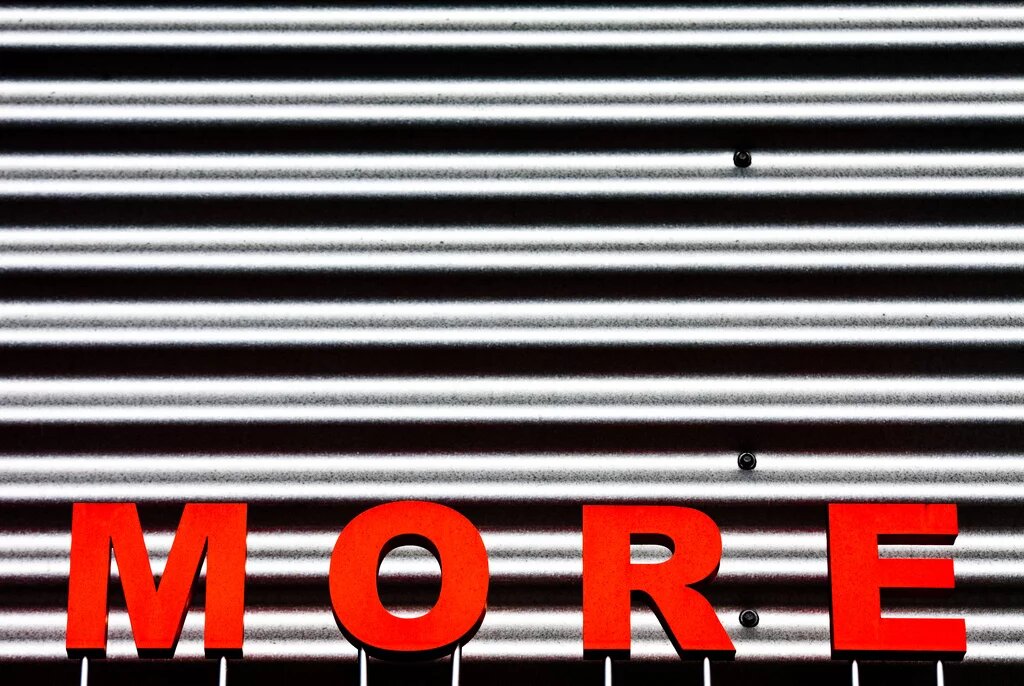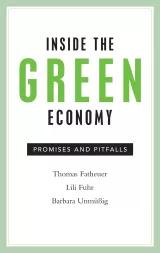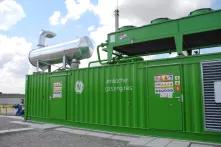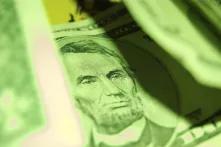
“Business as usual” is not a realistic option, as even the international mainstream of the World Bank, UNEP and OECD acknowledge, an admission which has in turn boosted the Green Economy’s career prospects. Breaking away from “more of the same” is the prerequisite for all conceptual and practical Green Economy approaches.
What form a departure from business as usual should take is a contentious matter. For nobody has defined what is meant by Green Economy — and certainly not in international law — thus leaving it open to divergent or even contradictory interpretations. The original “Green Economy” idea is somewhat vague. Nevertheless, a discourse has grown up and become established around the concept and is making an impact.
Up to the year 2008, the concept was used very little, and if it was, then mainly in the context of Green movements and political parties. As early as 1999, for instance, the economics professor and current British Green Party member of the European Parliament, Molly Scott Cato, published a book entitled Green Economics. For Cato, green economics is “inherently concerned with social justice. […] Green economics has emerged from environmental campaigners and Green politicians because of their need for it. It has grown from the bottom up and from those who are building a sustainable economy in practice rather than from abstract theories.”
Green New Deal
Soon, however, the conception drifted away from its grassroots origins. Initially, the concept that rose to popularity in the context of the financial and economic crisis from 2008 onward, was the “Green New Deal”. Green growth was expected to provide an answer both to the economic crisis and to global environmental challenges. In 2009, the United Nations Environment Programme, UNEP, launched the initiative for a “Global Green New Deal”. Achim Steiner, the Executive Director of UNEP, has become an eloquent and committed advocate of that conception. In the same year, the US President Barack Obama pledged to support a “Green New Deal”, while in Germany this concept found its way into the election manifesto of the German Green Party (Bündnis 90/Die Grünen). The idea of the “Green New Deal” harks back to historical experiences in the USA in the 1930s and 1940s, and hence to a neo-Keynesian tradition, whereby increasing government expenditure — financed by borrowing if need be — is seen as an appropriate response to economic crises. At this juncture, proposals for “greening” the economy and adherence to the pivotal significance of economic growth entered into a marriage that would prove to be enduring.
Prior to and during the Rio+20 Conference in 2012, “Green Economy” conceptions were then developed by three key actors: UNEP, the World Bank and OECD. The Green Economy was developed not so much as a new approach in economic theory, but rather as an attempt to lay new foundations for global environmental policy twenty years after the 1992 Rio Conference.
From the niche into the heart of the economy
The search for a new paradigm had surely been encouraged by the general perception that “sustainable development” felt timeworn and largely devoid of content. Furthermore, the term “development” steered attention heavily towards the so-called “developing countries”.
The new concept of Green Economy would finally address all countries, calling attention to their responsibility. Another thing that had changed was the role of economics, in the perception of many actors. The Stern Review was and is adjudged by many to have been a near-Copernican revolution in the climate debate. The former World Bank Chief Economist, Sir Nicolas Stern, had published a study in
2006 commissioned by the British government, which was intended to show that a resolute and rapid climate policy actually made economic sense, because inaction itself would turn out to be even more expensive. This economic study of climate change was to contribute immensely to the mainstreaming of climate policy. And indeed, climate policy made the leap out of its environmental niche into the heart of the economy. At the same time, Stern’s analysis made it possible to consider environmental policy as an opportunity for new investments — investments that would result in more cost savings than they would actually cost.
This is essentially the decisive conceptual innovation which was and continues to be expanded into a more encompassing Green Economy approach. Economic rationality no longer contradicts environmental and climate policy; on the contrary, it fosters it. This is no trivial promise.
Quantifying nature
The approach of incorporating nature into economic thinking highlights a further precursor of Green Economy in the history of economic theory. The criticism that economics disregarded nature was practically a leitmotiv of “Ecological Economics”, the critique of classical economics by a generation of environmentally-oriented economists whose best known representatives are surely Herman Daly and Robert Costanza. The ecological critique accused classical economics of perceiving the environment and nature primarily as external factors, and hence consigning them to systematic neglect.
The insistence on the internalisation of external factors — by means of an “eco-tax”, for instance — became one of the key reference points in the relationship between environmental policy and economics.
Various international initiatives, particularly the World Bank, took up some of the fundamental ideas of this Ecological Economics, systematized them and brought them up to date. The inclusion of nature in economics becomes a key question in this context. For nature and economics to be able to communicate with each other, however, data about nature needs to be captured in a way that is comprehensible to economics. That means nature must be quantified and, if possible, framed in monetary values. Hence the question of quantifying and measuring “natural capital” is a crucial unresolved issue of Green Economy which we will go on to explore thoroughly.
For an understanding of the Green Economy, however, one other development of recent decades is important. The tough negotiation process in relation to the Framework Convention on Climate Change, in particular, has done much to diminish hopes of an international climate regime that sets globally accepted and ambitious threshold values for greenhouse gases. The Paris Agreement buried that hope —
if not forever at least for the foreseeable future. Another disappointment is the second convention that was adopted at the 1992 Earth Summit, the Convention on Biological Diversity. It did not succeed in halting the megatrend of biodiversity destruction; many of its resolutions were not implemented. This policy failure reinforces ideas that place more emphasis on a change of course through economic incentives than on regulations. Within the UN system, efforts to involve the business sector have been intensifying for some time. The most prominent example is the Global Compact, i.e. the initiative that attempts to recruit corporations to adhere, on a voluntary basis, to such standards as human rights principles and labour norms. The Secretary General of the United Nations, Ban Ki-moon, summarises this as follows: “To a growing extent we do not consider business as a problem but as the place we must go to when we want to find solutions.”
No global love affair
All these developments are the backdrop against which the systematization into a Green Economy approach is taking place. Or as Pavan Sukhdev puts it: “Economics has become the currency of politics.” The world of global environmental policy does indeed look different in 2012 than in 1992.
Against this backdrop, the UNEP, World Bank and OECD launched their Green Economy conceptions. UNEP in particular strongly advocated using the Rio+20 Conference to establish Green Economy as a new global paradigm in order to replace or at least augment the “sustainable development” paradigm, which had come to look very threadbare. This was not a complete success. Green Economy did not spark a global love affair at the 2012 conference in Brazil; instead, reactions to Green Economy from actors from the global South, representing both governmental and non-governmental interests, ranged from sceptical to hostile.
That is another point which should not be overlooked: The Green Economy has become a negatively charged concept for many critical actors.
Thus, the closing declaration of the People’s Summit convened by civil society groups as an alternative to the Rio +20 conference contains an explicit rejection of this conception. As annoying or baffling as this may be for all those who want to uphold an emphatic concept of the Green Economy, it must nevertheless be borne in mind. In particular, the Green Economy approach of including nature as “natural capital” in economic calculations prompted the objection that it was “mercantilising nature”. Actors from the South contributed quite different conceptions to the debate, such as the “right to good living” (buen vivir) anchored in the constitutions of Bolivia and Ecuador, or the appeal to grant rights to nature (Mother Earth) itself. Ever since Rio, if not before, Green Economy has turned into a bone of contention, a disputed concept.
Green Economy and Green Growth - a interchangeable pair of concepts
The versions presented by UNEP, OECD and the World Bank are complex, and diverge on certain points. For instance, UNEP places especially strong emphasis on the dimension of social justice. Nevertheless, a few fundamental trends are common to all the approaches.
The message is, Green Economy and growth belong together; this is etched into the heart and the DNA of Green Economy. Likewise, the UNEP, which has developed perhaps the most differentiated Green Economy approach, promises that this will not only generate growth but actually stronger GDP growth. Green Economy, it is claimed, could become a “new engine of growth”. Rachel Kyte, Vice President of the World Bank, is categorical: “To talk about anything other than how to grow is a non-starter.”
Such choices of phrasing also make it clear that the Green Economy is to be discussed less as a theoretical conception and more as a pragmatically conceived policy approach. The pivotal role of the growth promise is what differentiates the Green Economy conception from other approaches, distinguishing it particularly from all those approaches which see growth as problematic. The most important global
actors in the debate have meanwhile joined forces to form a “Green Growth Knowledge” platform: this unites the OECD, UNEP, World Bank and the Global Green Growth Institute (headquartered in South Korea). It is striking that the concept of Green Growth is now gaining the upper hand. Indeed, from the very start, all the Green Economy conceptions have been intimately linked with adherence to the
special significance of growth. Green Economy and Green Growth have melded into a pair of concepts which have become almost interchangeable.
The second constitutive element for the Green Economy conception is the proposition, already implicit in the coining of the term, that the decisive challenge is not political but economic. “Economics first” is the message; the main thing is to get the economics right. The notion, which gained huge popularity thanks to the Stern Report, that climate change is the greatest market failure in history, culminates in the following point: if that be the case, then the critical challenge is to correct this market failure, and to do so with more market. This extends the horizon far beyond a more efficient, resource-saving economy.
The challenge of reconciling economics and ecology with growth calls for a wide-ranging systemic transformation. “To get the economies right” is not a banal task. A fundamental priority in this process is to capture the economic value of nature as natural capital. But this, in itself, is the point of principle that underlies the sometimes very vehement criticism of the Green Economy conception.
Faith in technological solutions
A further pillar of the Green Economy is the development of strategies and technologies for the better use of natural resources. Innovation thus represents a central hope and closely connects the Green Economy conception with bioeconomy approaches. The German government’s Green Economy research agenda emphasises this connection explicitly: “Whilst the bioeconomy uses and further develops biological processes and resources and in doing so makes them more efficient, technology, economy and ecology are systemically and sustainably linked — in line with the aims and guidelines of a Green Economy.”
The switch from fossil fuels to biomass, the use of new biotechnologies and the integration of “ecosystem services” in the economy are central concerns of the bioeconomy. The pivotal element of the bioeconomy is its faith in technological solutions (the “techno fix”).
Likewise, the Green Economy transformation agenda is founded, firstly, on a re-orientation of the economy entailing the integration of nature, and, secondly, on faith in technological solutions. Without the miraculous power of innovation, the promises of green growth are unfulfillable.
The aspects cited here are the critical leverage points of the various Green Economy approaches. The Green Economy does contain a range of positive elements and does state a few key challenges accurately, for example, how to supersede the fossil age and move urgently towards a low-emission and resource-efficient future. But the decisive question is whether the Green Economy is developing the right strategies. Only after realising that “business as usual” is not an option does the debate begin about how to effectuate the necessary social and environmental transformation — and the question of whose need of it is especially pressing.
On occasion, further confusion is added to the debate when the Green Economy is criticised on the basis of mistaken arguments. By no means all protagonists of the old (“brown”) economy have now become fervent or dubious Green Economy disciples. Specifically because it involves getting to grips with concrete strategies, climate policy will occupy a special position in our critical study, for that is the setting in which global approaches towards a new economy of nature are being developed and implemented most promisingly. In this connection we view the New Climate Economy Report, published in 2014 by the Global Commission on the Economy and Climate, as an important example of the new economic approaches for global climate and environmental policy.
This is an excerpt of the book "Inside the Green Economy" and is a part of the dossier of the same name.


